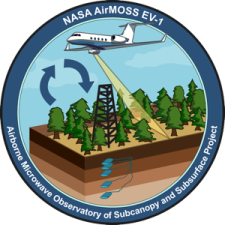The Airborne Microwave Observatory of Subcanopy and Subsurface, or AirMOSS, investigation is gathering high-resolution measurements of root-zone soil moisture in representative areas of North American ecosystems, quantifying the impact of variations in soil moisture on the estimation of regional carbon fluxes, and extrapolating the estimates of regional carbon fluxes to the North American continental scale. AirMoss uses an airborne ultra-high frequency synthetic aperture radar capable of penetrating through substantial vegetation canopies and soil to depths down to 4 feet (1.2 meters). For this mission, NASA's Uninhabited Aerial Vehicle Synthetic Aperture Radar, or UAVSAR, in P-band configuration is mounted in a pod and flown on a NASA G-III.
Airborne Microwave Observatory of Subcanopy and Subsurface (AirMOSS)
Mission
Disclaimer: This material is being kept online for historical purposes. Though accurate at the time of publication, it is no longer being updated. The page may contain broken links or outdated information, and parts may not function in current web browsers. Visit https://espo.nasa.gov for information about our current projects.


